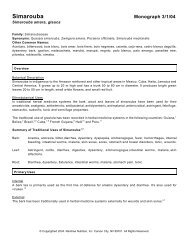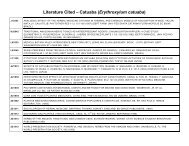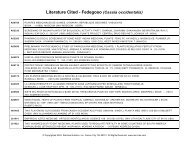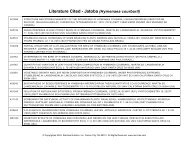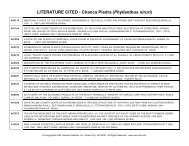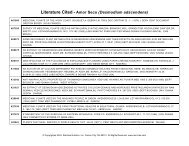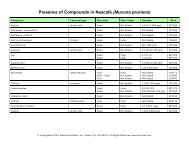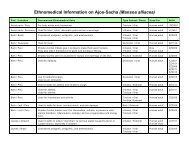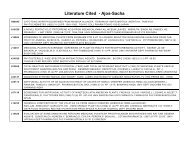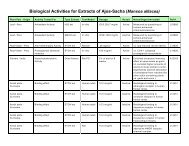Organ Specific Guide - Raintree Nutrition, Inc
Organ Specific Guide - Raintree Nutrition, Inc
Organ Specific Guide - Raintree Nutrition, Inc
Create successful ePaper yourself
Turn your PDF publications into a flip-book with our unique Google optimized e-Paper software.
SIMAROUBA EXTRACT<br />
Description: The main active group of chemicals in simarouba are called quassinoids. The antiprotozoal<br />
and antimalarial properties of these chemicals have been documented for many years. Several of the<br />
quassinoids found in simarouba (such as ailanthinone, glaucarubinone, and holacanthone) are considered<br />
the plant's main therapeutic constituents and are the ones documented to be antiprotozal, anti-amebic,<br />
antimalarial, and even toxic to cancer and leukemia cells. <strong>Raintree</strong>'s simarouba extract uses proprietary<br />
extraction methods which provide the equivalent of 500 mg simarouba bark per milliliter of extract.<br />
Traditional uses by organ or system: Digestion/Elimination: For dysentery and diarrhea, and as a bitter<br />
digestive aid to increase digestive juices and bile.<br />
Ingredients: Pure 100% simarouba bark (Simarouba amara) extracted in distilled water and ethanol.<br />
Suggested Use: Take 60 drops 2-3 times daily or as needed.<br />
Contraindications: None reported<br />
Drug Interactions: None reported.<br />
Other Practitioner Observations and Possible Precautions: Reported side effects at high dosages<br />
(approx. 5 times the suggested use) include increased perspiration and urination, nausea, and/or vomiting.<br />
Synopsis of research: (Please the online Tropical Plant Database for Simarouba for all cited research.)<br />
The leaves and bark of Simarouba have long been used as a natural medicine in the tropics. Simarouba<br />
was first imported into France from Guyana in 1713 as a remedy for dysentery. When France suffered a<br />
dysentery epidemic from 1718 to 1725, simarouba bark was one of the few effective treatments. French<br />
explorers "discovered" this effective remedy when they found that the indigenous Indian tribes in the<br />
Guyana rainforest used simarouba bark as an effective treatment for malaria and dysentery—much as they<br />
still do today. Other indigenous tribes throughout the South American rainforest use simarouba bark for<br />
fevers, malaria, and dysentery, as a hemostatic agent to stop bleeding, and as a tonic.<br />
After a 200-year documented history of use for dysentery, simarouba's use for amebic dysentery was<br />
validated by conventional doctors in 1918. A military hospital in England demonstrated that the bark tea was<br />
an effective treatment for amebic dysentery in humans. The Merck Institute reported that simarouba was<br />
91.8% effective against intestinal amebas in humans in a 1944 study and, in 1962, other researchers found<br />
that simarouba showed active anti-amebic activities in humans. In the 1990s scientists again documented<br />
simarouba's ability to kill the most common dysentery-causing organism, Entamoeba histoly-tica, as well<br />
as two diarrhea-causing bacteria, Salmonella and Shigella.



